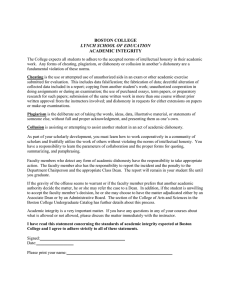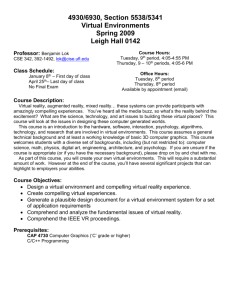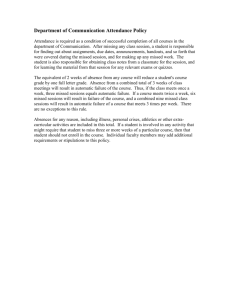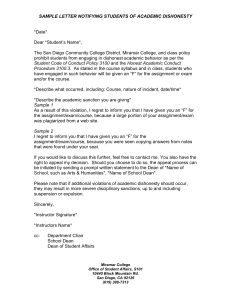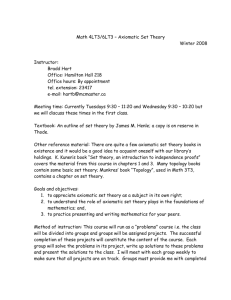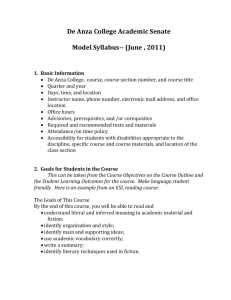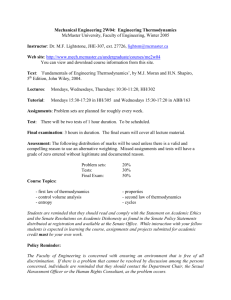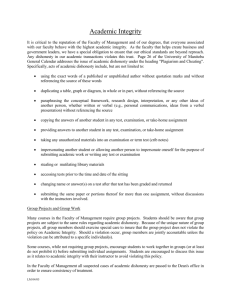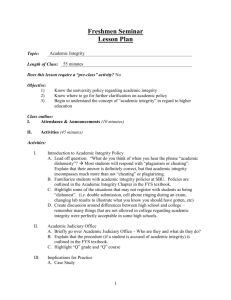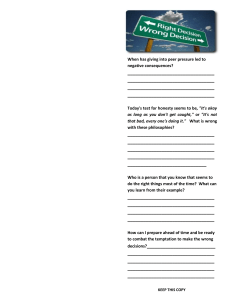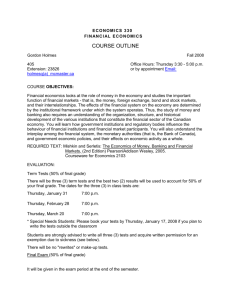Checklist for Instructors - Academic Honesty at UC Irvine
advertisement
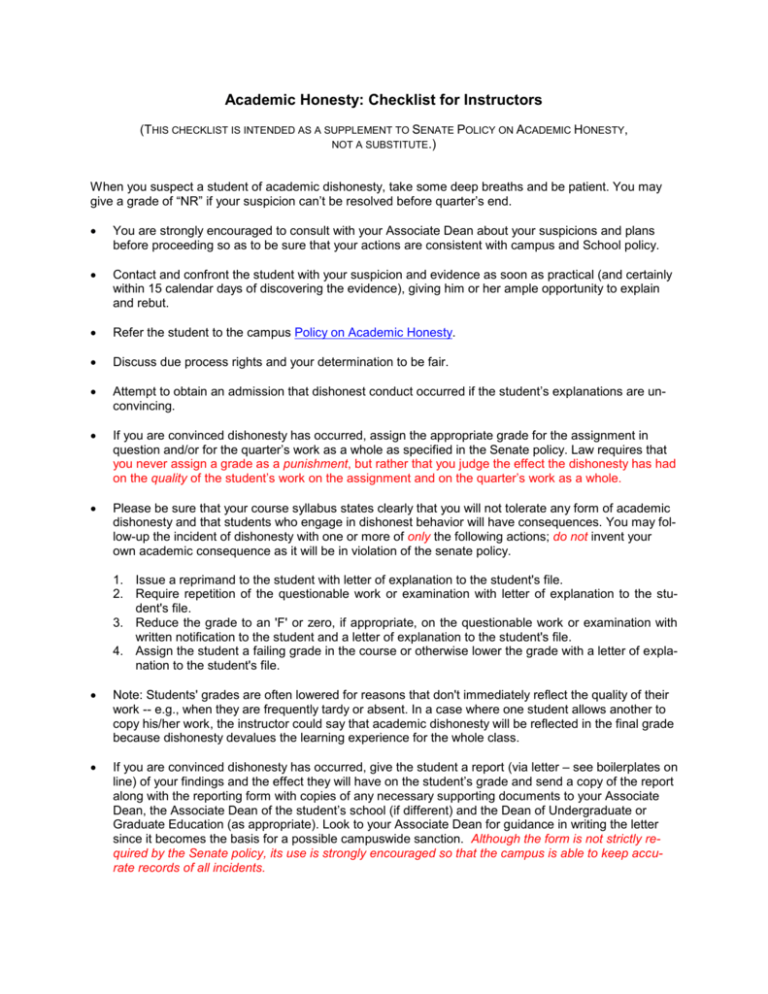
Academic Honesty: Checklist for Instructors (THIS CHECKLIST IS INTENDED AS A SUPPLEMENT TO SENATE POLICY ON ACADEMIC HONESTY, NOT A SUBSTITUTE.) When you suspect a student of academic dishonesty, take some deep breaths and be patient. You may give a grade of “NR” if your suspicion can’t be resolved before quarter’s end. You are strongly encouraged to consult with your Associate Dean about your suspicions and plans before proceeding so as to be sure that your actions are consistent with campus and School policy. Contact and confront the student with your suspicion and evidence as soon as practical (and certainly within 15 calendar days of discovering the evidence), giving him or her ample opportunity to explain and rebut. Refer the student to the campus Policy on Academic Honesty. Discuss due process rights and your determination to be fair. Attempt to obtain an admission that dishonest conduct occurred if the student’s explanations are unconvincing. If you are convinced dishonesty has occurred, assign the appropriate grade for the assignment in question and/or for the quarter’s work as a whole as specified in the Senate policy. Law requires that you never assign a grade as a punishment, but rather that you judge the effect the dishonesty has had on the quality of the student’s work on the assignment and on the quarter’s work as a whole. Please be sure that your course syllabus states clearly that you will not tolerate any form of academic dishonesty and that students who engage in dishonest behavior will have consequences. You may follow-up the incident of dishonesty with one or more of only the following actions; do not invent your own academic consequence as it will be in violation of the senate policy. 1. Issue a reprimand to the student with letter of explanation to the student's file. 2. Require repetition of the questionable work or examination with letter of explanation to the student's file. 3. Reduce the grade to an 'F' or zero, if appropriate, on the questionable work or examination with written notification to the student and a letter of explanation to the student's file. 4. Assign the student a failing grade in the course or otherwise lower the grade with a letter of explanation to the student's file. Note: Students' grades are often lowered for reasons that don't immediately reflect the quality of their work -- e.g., when they are frequently tardy or absent. In a case where one student allows another to copy his/her work, the instructor could say that academic dishonesty will be reflected in the final grade because dishonesty devalues the learning experience for the whole class. If you are convinced dishonesty has occurred, give the student a report (via letter – see boilerplates on line) of your findings and the effect they will have on the student’s grade and send a copy of the report along with the reporting form with copies of any necessary supporting documents to your Associate Dean, the Associate Dean of the student’s school (if different) and the Dean of Undergraduate or Graduate Education (as appropriate). Look to your Associate Dean for guidance in writing the letter since it becomes the basis for a possible campuswide sanction. Although the form is not strictly required by the Senate policy, its use is strongly encouraged so that the campus is able to keep accurate records of all incidents.
